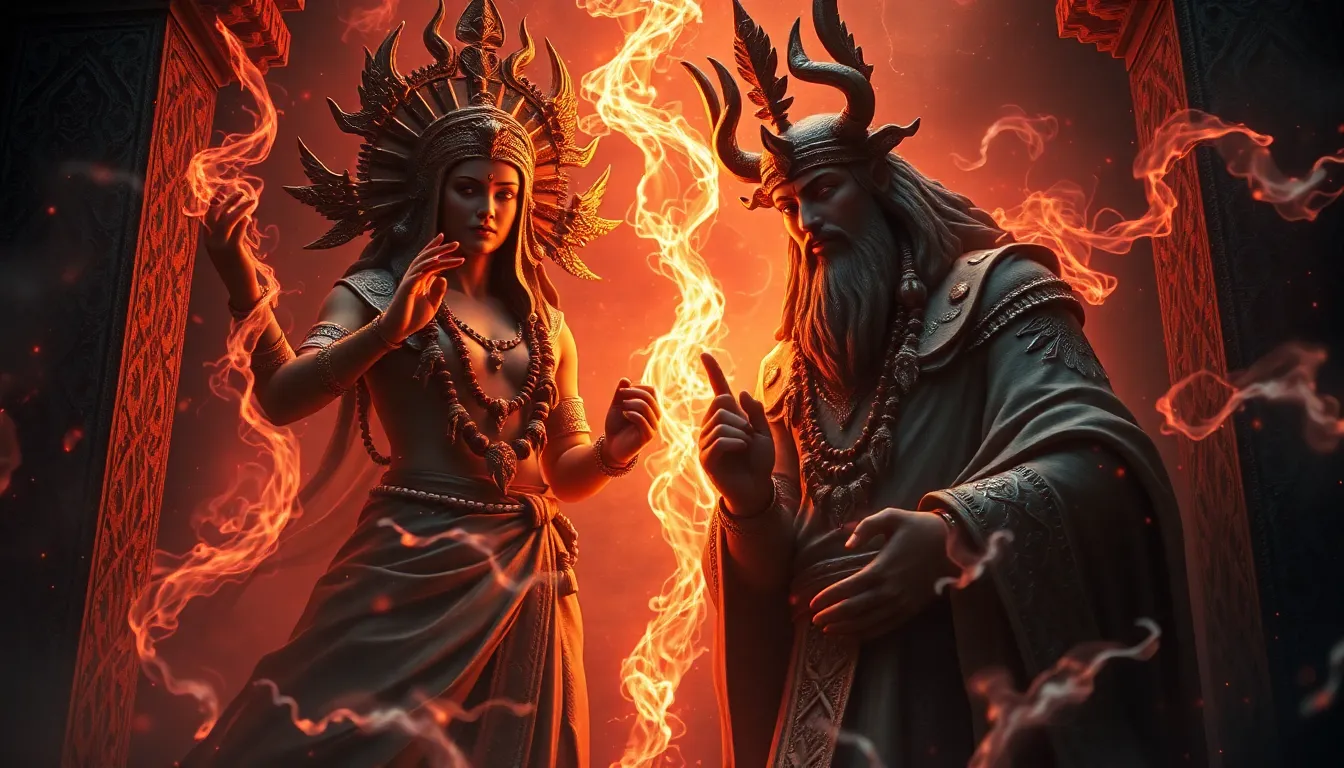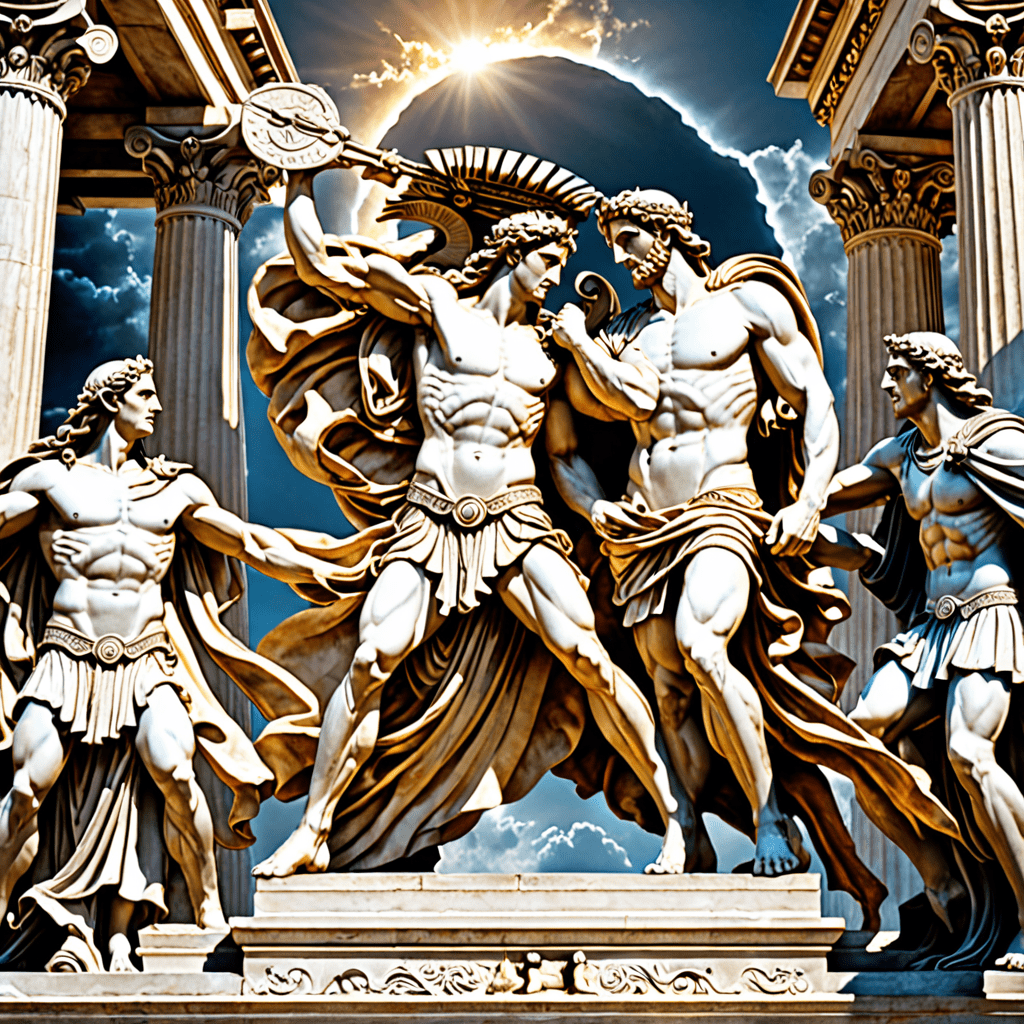The Firebird and the Tsar: A Quest for Immortality in Slavic Legends
I. Introduction
Slavic folklore is a rich tapestry of myths, legends, and tales that reflect the cultural values, beliefs, and history of Slavic peoples. These stories, passed down through generations, often explore profound themes such as love, sacrifice, and the quest for knowledge. Among the myriad of characters found in these tales, the Firebird and the Tsar stand out as central figures, each embodying unique aspects of the human experience.
The Firebird, a mystical creature with dazzling plumage, represents not only beauty and magic but also the elusive nature of desire and aspiration. The Tsar, as a ruler, symbolizes authority, power, and the human longing for immortality. The theme of immortality resonates throughout Slavic legends, signifying humanity’s enduring quest to transcend the limits of life and death.
II. The Myth of the Firebird
A. Description of the Firebird in Slavic mythology
The Firebird is often depicted as a magnificent bird with fiery feathers, glowing with hues of red, orange, and gold. Its enchanting song captivates all who hear it, often leading them on a journey of discovery or peril. The Firebird is not merely a creature of beauty; it possesses magical powers that can bring fortune or misfortune, depending on the intentions of those who seek it.
B. Symbolism and significance of the Firebird in culture
In Slavic culture, the Firebird symbolizes:
- Hope: The Firebird often appears as a harbinger of change and possibility.
- Transformation: Its fiery nature signifies rebirth and the cycles of life.
- Desire: The pursuit of the Firebird represents the human yearning for the unattainable.
C. Variations of the Firebird story across different Slavic regions
While the core elements of the Firebird myth remain consistent, variations exist across different Slavic cultures. In Russian folklore, the Firebird is frequently associated with the hero Ivan Tsarevich, who embarks on a quest to capture the bird. In Polish tales, the Firebird may be linked to the quest for a lost kingdom or a beloved princess. These regional variations reflect local values and themes, enriching the Firebird’s mythos.
III. The Role of the Tsar in Slavic Legends
A. Definition and characteristics of the Tsar as a figure
The Tsar is the embodiment of leadership, often portrayed as a wise yet flawed ruler. He is characterized by his desire to protect his realm, his people, and his legacy. The Tsar’s motivations are complex, driven by both noble intentions and darker ambitions.
B. The Tsar’s quest for immortality and its motivations
Central to many Slavic legends is the Tsar’s quest for immortality. This desire often stems from:
- Fear of death: The inevitability of mortality drives the Tsar to seek eternal life.
- Desire for legacy: To be remembered throughout history is a powerful motivation.
- Love for his people: The Tsar may seek immortality to ensure the protection and prosperity of his realm.
C. Connections between the Tsar and the Firebird
The Firebird plays a pivotal role in the Tsar’s journey towards immortality. Often, the Tsar’s quest involves capturing the Firebird, which is believed to hold the key to eternal life. The relationship between the Tsar and the Firebird symbolizes the tension between the pursuit of power and the acceptance of human limitations.
IV. The Quest for Immortality
A. Exploration of immortality in Slavic folklore
Immortality, as explored in Slavic folklore, is not merely about living forever; it encompasses the desire for significance and the struggle against the inevitability of death. The stories often illustrate that the pursuit of immortality comes with its own set of challenges and moral dilemmas.
B. The Tsar’s journey and challenges faced in pursuit of the Firebird
The journey of the Tsar is fraught with obstacles, including:
- Physical challenges: The Tsar may face treacherous landscapes and formidable foes.
- Moral dilemmas: He must navigate the choices between good and evil, often testing his character.
- Internal conflicts: The quest forces the Tsar to confront his own desires and fears.
C. Themes of sacrifice, desire, and the human condition
The quest for immortality in these legends highlights essential themes of sacrifice and desire. The Tsar’s pursuit often requires him to make difficult choices, reflecting the broader human condition. It raises questions about the nature of existence, the value of life, and the consequences of obsession.
V. Key Characters and Their Archetypes
A. The Tsar as the archetypal ruler
The Tsar embodies the archetype of the ruler, representing both the potential for greatness and the pitfalls of power. His character often serves as a cautionary tale about the dangers of unchecked ambition.
B. The Firebird as a symbol of magic and mystery
The Firebird stands as a symbol of magic, mystery, and the unknown. It represents the allure of the unattainable and the enchantment of nature.
C. Supporting characters: heroes, villains, and mythical creatures
Alongside the Tsar and the Firebird, various supporting characters enrich the narrative, including:
- Heroes: Brave individuals who assist the Tsar on his quest.
- Villains: Figures who embody obstacles and temptations.
- Mythical creatures: Beings that add depth and complexity to the story.
VI. Interpretations and Adaptations in Literature and Art
A. Overview of literary adaptations of the Firebird and the Tsar
The legend of the Firebird and the Tsar has inspired countless literary adaptations, from traditional folktales to contemporary interpretations. Authors have explored the themes of desire, power, and the human experience through their unique lenses.
B. Influence on visual arts, including paintings and ballets
The Firebird has also made a significant impact on visual arts. Notable examples include:
- Paintings: Artists have depicted the Firebird in vivid colors, capturing its ethereal beauty.
- Ballets: Igor Stravinsky’s ballet “The Firebird” is a celebrated adaptation that brings the story to life through dance and music.
C. Modern interpretations and relevance of the legends today
Modern interpretations of the Firebird and Tsar legends continue to resonate with audiences, reflecting contemporary themes of ambition, identity, and the search for meaning in a complex world.
VII. The Cultural Legacy of the Firebird and the Tsar
A. Impact on Slavic culture and national identity
The legends of the Firebird and the Tsar have left an indelible mark on Slavic culture, shaping national identities and fostering a sense of shared heritage.
B. The Firebird as a symbol of hope and resilience
The Firebird embodies hope and resilience, serving as a reminder of the potential for renewal and transformation in the face of adversity.
C. How the quest for immortality reflects broader existential themes
The quest for immortality transcends cultural boundaries, reflecting universal existential themes that resonate with the human condition. It invites contemplation on the meaning of life, the inevitability of death, and the legacy one leaves behind.
VIII. Conclusion
In summary, the Firebird and the Tsar are significant figures in Slavic legends, each representing profound themes of beauty, power, and the quest for immortality. These stories endure through time, reminding us of the complexities of the human experience and the eternal search for meaning. The quest for immortality, as illustrated through these legends, continues to inspire reflection and exploration in our own lives.
Ultimately, the tales of




